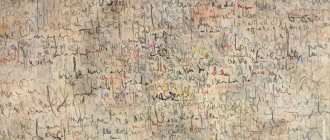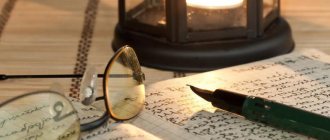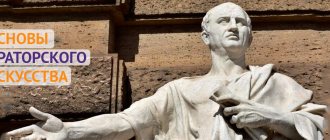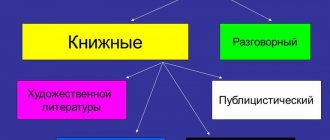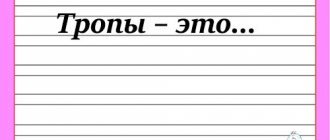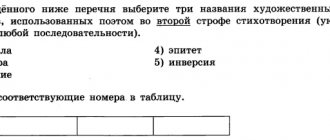Properties of public speaking
Various public speaking skills are developed in the process of relevant classes and trainings, and their manifestation is public speaking, which has the following basic properties:
1) special structure of speech , the relationship between linguistic and non-linguistic (facial expressions, gestures) means of persuading the audience;
2) the focus of the speech on obtaining a response from the listeners, since its goal is not simply conveying information, but persuasion;
3) effectiveness , depending on the psychological mood and state of the speaker, his authority in the eyes of the public.
What is eloquence?
The definition of this term emphasizes two main components - the art of decorating speech and the art of persuasion.
Speech is enhanced by good diction, a pleasant timbre of the voice, the right tempo, lively intonation, a rich vocabulary, and competent and expressive presentation. Without the ability to speak beautifully, it is unlikely that you will be able to convince anyone of anything.
And vice versa. Speech that is meaningless, incomprehensible, chaotic, full of baseless arguments and facts, and does not have a clear structure is unconvincing. But if it is presented beautifully, then outwardly impressive and verbose it will serve as an example not of eloquence, but of eloquence.
Types of oratory
Rhetoric highlights the types of public speaking that you need to know in order to speak successfully in each specific situation.
Since oratory originated in Ancient Greece, there are outdated genera and types of oratory that have lost their meaning today.
The modern classification boils down to the following:
1) Socio-political oratory involves such forms of expression as a report on any economic, socio-political topics, diplomatic and political speech, agitation and rally speech, military-patriotic speech, as well as political review.
2) Academic oratory is distinguished by the presence of special terminology, a strict style of speech, argumentation, and logic, that is, it is scientific speech. This form presents such genres of oratory as a scientific report, lecture, message, review.
3) Judicial oratory is found in various trials and is distinguished by reasoning, objectivity, evidence, and sometimes has an evaluative nature. This type includes the following genres of oratory: accusatory speech, defensive speech.
4) Social and everyday oratory has several basic forms, and the oratorical techniques used in this type of eloquence reflect certain social, kinship, and family relationships. The most common types and types of oratorical speech of this type are anniversary, congratulatory, laudatory speech, toasts, memorial, funeral speech;
5) Theological-church oratory is represented by the oratorical genres of sermons and other church speeches. This type also has its own characteristics, expressed in the absence of argumentation, logic and evidence, and the content of the speech itself does not imply the need for the listed properties to be present in it, and the audience also does not expect the appearance of any arguments.
As a special variety, dialogical forms of oratory are distinguished, which are expressed in discussion, dialogue and polemics. They also have certain features associated with the need to influence a single interlocutor or several participants in the conversation.
In particular, the role of emotional and psychological techniques is significantly reduced, and the importance of argumentation increases, since there is no crowd.
General and private rhetoric
Narrative essays have as their subject events from human life at their beginning, gradual development and end. In order to present the events that actually happened, the narrator must first collect a sufficient supply of facts and, in general, historical information relating to these events. The facts that make up the material of the story are usually gleaned from sources. These sources are: chronicles, chronicles, historical notes and other narrations of other persons about events. Having collected a sufficient supply of facts, the writer begins to process his material; he explores the immediate and individual causes of events, delves into the characters of the characters, their goals and aspirations, and tries to reveal the inner meaning and significance of the facts. Such preliminary development of the material gives him the opportunity to bring all the various facts into a harmonious whole, and generally present the events clearly and distinctly.
The narrative should be arranged in order of time, that is, first mentioning the circumstances that preceded it, then those that followed, and so on, and conclude with the complete end of the event. The main rule here should be to observe strict gradualness in the transition from one circumstance to another, without mixing them together and without losing sight of the whole event.
The syllable of narrative essays is determined by the nature of the situation. If the writer’s goal is only a simple, correct presentation of events, then simplicity and nobility are required from the style. If the writer’s goal is to reproduce as vividly and clearly as possible a known era with its events and persons, then the style also deserves vividness and clarity.
The main types of narrative essays are: chronicle or chronicle, historical notes, history, biography with its types of autobiography and obituary.
Story
, in a broad sense, is an account of the past life of humanity. It examines all the various phenomena of this life in their gradual development in different times and among different peoples. The political life of the people, their religion, citizenship, industry, science, art, literature, etc., are included in its field and form the subject of its research; therefore, history, depending on the subject, falls into many separate types, for example: the history of the political life of peoples, the history of religion, the history of citizenship, the history of industry, the history of sciences, arts, literature, etc. But, in the narrowest sense, the name of history means the narration of the past political life of peoples.
The story is divided:
1) by time: ancient, middle and new;
2) in scope: universal, which sets out the fate of all peoples who have ever acted or are acting in the field of the political world; and private, which describes the life of one people, or one remarkable event.
History, as a narration of past events, originates from chronicles, but differs from them in its pleasant, entertaining story and harmonious combination of facts into one whole. Narrative history becomes artistic if it vividly and clearly reproduces the past era with its events and persons. In a truly artistic narrative, the historian does not go into abstract reasoning and interpretation of facts, but brings before the readers a number of persons, actions and events, and depicts them as living reality. An elegant narrative, captivating the imagination, takes the reader into the era, introducing him to the way of thinking, passions and morals of that time. One of the greatest virtues of history as a narrative is the artistry of character. The art of the historian here lies in the analysis and description of characters, and in the ability to portray them through their aspirations and actions.
Chronicle
or
a chronicle
is a simple, unartificial presentation of events in the political, civil and church world in chronological order, by year and date.
– It does not reveal the internal connection of events, and often mixes folk legends with important facts. In general, the chronicle is the simplest, primary form of history. Examples of chronicles include: the legend of the first Russian chronicler Nestor
, a monk of the Kiev Pechersk Monastery, who lived in the 11th century.
Among the successors of the Nestor Chronicle, the names of Vasily
and
Silverst
.
Of the many verses of that chronicle, the oldest is called Laurentian 1377. After the legend of Nestor, chronicles are found: Kiev
(before the Mongol invasion);
Novgorod, Pskov
(until the 15th century);
Western Russian
,
Little Russian
( from the 14th to the 17th centuries) and
Eastern Russian Ryazan
, Tver and, subsequently, in the Moscow state.
These last chronicles cover the time from the 13th century to the beginning of the 18th century; in the 16th century they were compiled officially at the Moscow court. Among the individual legends about important events in our fatherland, the most remarkable in the 17th century is the tale of Abraham Palitsin about the siege of the Trinity-Sergius Lavra .
Historical notes
or memoirs
contain information about incidents reported by eyewitnesses and contemporaries, and consisting of stories, anecdotes, notes, etc.
Most of the historical notes belong to government officials who took an active part in the events of the political world. Historical records are precious in that the historian can extract many interesting details to characterize persons and events. In addition, they often reveal the hidden springs of what happened. Western Europe is rich in historical notes, especially France, where they appeared already in the 13th century and continue to this day. In our historical literature one can point to the notes of Ambrose Palitsin
(about the siege of the Trinity Monastery),
Count Matveev
(about the Streltsy revolt),
Zhelobutsky
to 1769),
Krekshin
(about the affairs and campaigns of Peter),
Khrapovitsky
(about Empress Catherine the 2nd),
Poroshina
(about Emperor Pavel Petrovich ),
Shishkova
(about the war of 1812).
–
A biography
is a historical work that describes the life of one person remarkable for his exploits in the civil, military, spiritual, scientific or literary field.
The task of a biography is to present a person’s life accurately, completely, in the consistent success of his labors and exploits, in an entertaining and important way, and, moreover, in such a way that in all the changes of his fate his constant character, his greatness or merit are revealed. benefit of the fatherland.
Biography accessories
. When presenting the life of a famous person, one must: firstly, present all its remarkable events, starting from the most important era in chronological order; 2nd, to show what caused the events and changes in his fate, what the consequences were, what the purpose of his actions was, what contributed and what hindered its achievement; 3, to reveal the moral dignity of the person being described, to evaluate all his actions and works, if he was a writer, scientist or artist, or distinguished himself in the military, civil or spiritual field.
From this it is clear that biography has the same rules as history; it should not consist in a dry calculation of various petty circumstances of life, such as: years of birth, entry into service, death, etc., but present the most important events in a pragmatic connection - lively, exciting and instructive.
Materials for compiling biographies can include: autobiography, obituaries, anecdotes and memoirs.
.
Autobiography
is called an essay in which the writer himself sets out his life.
Obituary
- brief news about the life and merits of a person, written shortly after his death; It differs from a biography in that it does not set out all the events in the life of the person described and does not depict all the properties of his character, but is limited only to indicating his most important occupations, type of life, etc.
Joke
consists of a short story about some incident, in which the characteristic features of the morals of a famous person, his remarkable actions, sayings, etc. are expressed.
Examples of elegant storytelling include: Herodotus among the Greeks;
among the Romans
Titus Livius
;
among the French, Brant
(in the history of the Dukes of Burgundy),
Augustus-Thierry
(in the history of the conquest of England by the Normans);
among the English Robertson
(his history of Scotland in the reigns of Mary Stuart and James II, and his history of Charles V),
Hume
(his history of England);
among the Germans Ronko
(his history of Pap).
During the reign of Catherine the 2nd, they were especially engaged in Russian history, searching for and exploring ancient historical monuments, chronicles, notes, and charters; and then Prince Shcherbatov
wrote
a detailed Russian history
, brought to Mikhail Feodorovich, but in a heavy style and with large errors.
Schlozer
, a German professor, member of the Academy of Sciences, was engaged in scientific critical processing of Russian history;
He also translated Nestor into German. Golikov
wrote
the Acts of Peter the Great
and
additions to them
.
Finally, in this century. “The History of the Russian State” - Karamzin, brought to the beginning of the 17th century, can serve as the first example of a pragmatic artistic work. In military history, the work of Mikhailovsky-Danilevsky
, who described the Patriotic War of 1812, is distinguished by such merits.
Black rhetoric is a game without rules
One of the most popular textbooks on rhetoric in the modern world has become the book by consulting specialist Carsten Bredermeier, “Black Rhetoric: The Power and Magic of the Word,” which has already been republished many times.
“To be clear, a speaker must be frank” (Vasily Klyuchevsky)
What is black rhetoric? The author himself compares speech constructed according to these rules with “verbal mines flavored with arsenic.” A more modest definition of black rhetoric is this: it is the manipulation of all available techniques (dialectics - the art of dialogue, eristics - the methodology of arguing) so that the conversation constantly turns into a direction convenient for us, so that we can “knock out” the opponent, bring the dispute to the result we need.
Everything is allowed! Demagogic techniques, manipulation, distortion - and, of course, emotions, outright bluff and jokes. Of course, with the help of such techniques it is more convenient to disguise one’s incompetence as a speaker, but, according to adherents of black rhetoric, it does not at all mean the ability to get by only with prohibited techniques. On the contrary, the more savvy you are in the issue under discussion, the more prepared your speech is, the more effective the tricks described by Bredermeier will be.
The author believes that rhetorical techniques themselves, no matter how dubious they may look, cannot carry a positive or negative message—it all depends on what goal you set for yourself as a speaker. Play on emotions, throw your opponent off balance, act in a dispute in a way that he does not expect! These are just part of the arsenal of those who set out to use methods of black rhetoric in communication. In part (as you have probably already noticed) this movement has something in common with the sophists of ancient Greece.
What basic rules can be identified?
- You need to express your thoughts clearly, briefly, accurately and figuratively.
- It is necessary to clearly highlight in your speech the main and secondary, the main points of your speech.
- It is imperative to highlight the main idea, which accumulates almost the entire essence of the speech.
- Constantly repeating the main idea, it should “be deposited in the listeners’ subcortex.”
- Present your listeners with contrasts: “Now or never!”, “There is no third option!”
This increases emotionality and distracts from attempts to think critically: in the case of black rhetoric, it is better not to give the listener such an opportunity.
- Erase the line between lies and truth, turn information around in a way that suits you. Even if this technique is exposed, you will attract attention. An example from the yellow press: a newspaper comes out with the headline “The most famous actor N, a favorite of the public, died tragically, shot by his wife’s lover!” And the article talks about how N is simply playing the role of a deceived husband in yet another performance...
- Statements must be targeted. Address the audience confidentially, try to touch their heartstrings, awaken personal memories and emotions. Be sure to “poke in the soft spot” of your opponent as well: this will make him nervous and confuse his thoughts.
Examples of black rhetoric Accusation: “Well, we all know very well that dishonest people work in this company.”
Third-person insult: “If I were your boss, you would be held accountable for your stupidity!”
Refined politeness combined with humiliation: “Ivan Ivanovich, I beg you to forgive me, but at the planning meeting you spoke such nonsense.”
Offering a choice, in which any option will present the opponent impartially: “Did you oversleep for work because you had too much at the club again, or do you just not care about our common cause?” (You can remember the famous “Have you stopped drinking cognac in the morning? Yes or no?”)
Emphasizing one’s high position while simultaneously devaluing it: “Well, let’s take half an hour to see what yesterday’s schoolgirl will teach us...”
This is what it is, black rhetoric. Whether to use such techniques is your own business. This is a matter of morality rather than professionalism (although no one argues that black rhetoric is sometimes very effective). Masters who have made a name for themselves in the field of such eloquence are feared, but are they respected? In addition, it is quite difficult to find the line where teasing (even if offensive) ends and insults and slander begin, for which one can be held accountable to the fullest extent of the law.
Exercises for developing beautiful speech
- Choose an item of kitchen utensils or home furnishings, for example, a cabinet, and try to describe it for 10 minutes in an artistic style, beautiful literary language.
- Take any text and replace all the verbs in it with synonyms, then do the same with nouns and adjectives.
- A very interesting word game is to create phrases from words with opposite meanings. For example, hot snow, white night, brave hare.
- Think of a word and come up with a separate word for each letter that makes it up. For example, winter - “Zoya is looking for my album.”
- Retell the newspaper story in your own words, add your own opinion about what happened, season it with humor, if appropriate.
- Make it a rule to learn 5 or 10 new words every day.
As you can see, the exercises are simple, but regularity is the main condition and the key to results.
How to develop eloquence?
So, we learn to master the heart and mind of our interlocutor. The beauty of speech is for the heart, persuasiveness is for the mind.

